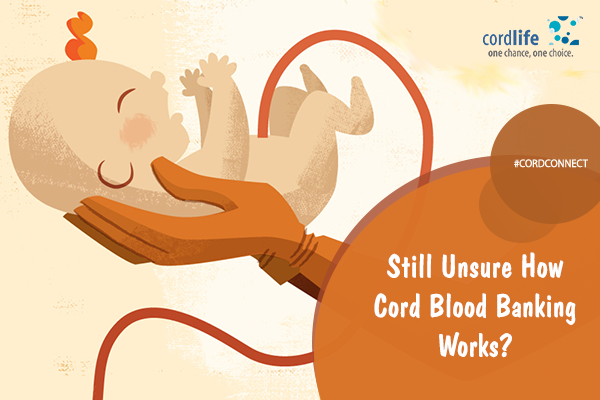Table of Contents
Cord blood is the richest source of stem cells and is derived from the blood of a new born baby’s umbilical cord. Stem cells are used in various clinical processes these days. Once collected and preserved, the cord blood stem cells have the healing power to treat many diseases by growing new tissues, blood vessels and even organs. They are collected and stored in various cord blood banks, so that they can be used later. There are a number of assumptions and misconception about cord blood banking. If you too have any questions or doubts about cord blood banking, this blog will help you a lot.
Cord blood banking involves three stages.
Collection
Cord blood is derived right after child birth and before the placenta is delivered. The blood is collected after the cord is clamped and cut. So, the process is entirely safe and painless for both the mother and the child. The procedure can be applied in both vaginal and C-section cases.
The process is so quick that often new mothers remain unaware of the collection. Parents can donate their baby’s cord blood to any cord blood bank, so those who need it, can use it later. New parents can even pay to store their baby’s cord blood to treat any of their family members’ diseases. However, before the delivery, blood samples of the mother are collected and tested for any infection.
Processing
Cord blood remains healthy and intact for up to 72 hours of collection. After it reached the bank, it gets tested and processed within 72 hours to ensure the highest recovery chances. Along with the maternal blood, the cord blood is also tested for any infections. In the next step, the cord blood sample is processed to separate the stem cells from the plasma and the red blood cells. This way, the stem cells are gathered from cord blood.
Preservation: Once the technicians get the stem cells, they proceed to preserve it. The preservation process involves freezing at a very low temperature, so that the stem cells remain intact without any side effects like ageing. This way, the stem cells can be preserved for decades.
There are two types of cord blood bank: Public and Private.
Public Cord Blood Bank
These banks collect cord blood by donations. Parents willingly donate the cord blood for patients, seeking a stem cell transplant or clinical researches. Anyone can choose to store their baby’s cord blood in the public banks and there are no charges involved. However, once donated, these cord blood cannot be reserved for family treatments.
Private Cord Blood Bank
Sometimes new parents decide to store the cord blood of their new born, so that it can be used to treat any diseases of the family members or even the baby in the long run. If you have more than one child, the siblings can use each other’s cord blood for surgeries. However, it’s recommended to store cord blood, each time a baby is born.
Use of cord blood has increased drastically in the past few decades. With more researches involving stem cells, the demand for cord blood will only grow. And cord blood banks play a pivotal role in this entire procedure and how!
